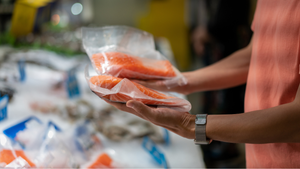It’s Time to Make Your Grocerant Hyperlocal
Grocery stores could learn from restaurants as they help folks figure out what’s for dinner. The Lempert Report: Retailers would be wise to learn from restaurants as they help folks figure out what’s for dinner.
June 12, 2019

Supermarkets continue striving to be as local as possible, but the quest will become that much trickier now with “hyperlocal” gaining traction in the foodservice sector. Hyperlocal restaurants are sourcing almost all their food locally; many are now growing vegetables in the backyards of their restaurants. The National Restaurant Association rated hyperlocal food as the No. 1 growing trend in 2018.
It’s time that supermarkets jump on the trend for their grocerants and prepared food offerings to stay competitive, especially in the geographic areas where there are high population concentrations of millennials and Generation Z consumers.
There are two tracks supermarkets should embrace when it comes to being hyperlocal. The first is about the food. While it may seem unrealistic to grow your own foods, with today’s technologies, it is really quite easy. Using indoor farming techniques, supermarket grocerants can take a small area and create a see-through hothouse for growing a variety of herbs, lettuces and vegetables that will underscore just how hyperlocal the menu offerings are and also create a powerful retail theater experience.
Here are a few examples of what some hyperlocal restaurants are doing across the nation:
Vinland, in Portland, Maine, touts itself as the world’s only 100% local food restaurant and sources every single bit of food from Maine.
Des Moines, Iowa, is an emerging hot spot for millennials, and HoQ Restaurant is a farm-to-table establishment that uses 90% local ingredients. Its owners are dedicated to sustainability and purchase whole animals and use fair trade, locally roasted coffee and local liquors in the bar. The menu lets you know exactly where your food came from, listing each farm and its offerings.
Salt Lake City’s Pago aims for a menu of only local ingredients, and in 2010, it broke ground on its very own microfarm in nearby Sugar House. The farm provides vegetables such as heirloom tomatoes, kale and beets.
The Orlando World Center Marriott recently debuted a high-tech solution to food sustainability in the hotel’s nine dining outlets, and it’s called the HyCube. It’s a “modular hydroponic vegetable production system” that uses 90% less water than traditional farms, and it produces 150 different types of fresh lettuce, herbs, microgreens and edible flowers.
The second track is all about marketing and using targeted digital platforms, including social media, which focus on a highly targeted, much smaller geographic footprint. According to Google insights, 50% of mobile users (and 34% of users of tablets or computers) are most likely to visit a store after conducting a local search to find store hours, directions to the store, product availability and descriptions and related information. Think about the “near me” feature that many search engines now offer as an example.
Market your grocerant, prepared foods and meal kits in digital ads that are customized to their locations. Google reports that 19% of people who responded to local ads made an unplanned visit to a store and made a purchase. One key, according to Google, is to help consumers find what they need.
For decades, our industry has lamented that people don’t know what they will have for dinner at 5 p.m. So let’s start using hyperlocal marketing to send them a text, email, pop-up or ad on their mobile device sharing what’s on your grocerant’s specials or prepared foods at 5 p.m. to induce them to stop at your store on the way home for a meal and glass of wine.
Can you just imagine what could happen if supermarkets took a page out of this foodservice book?
About the Author
You May Also Like




